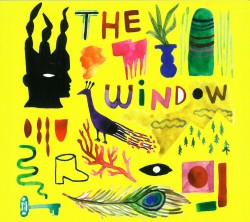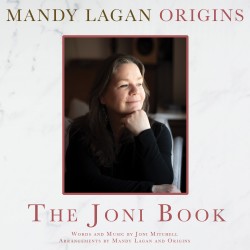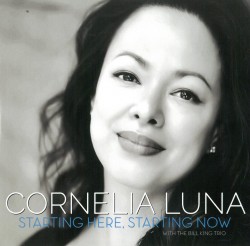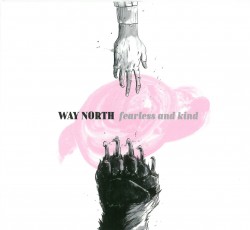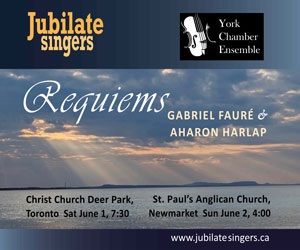As the advances, musical and otherwise, that transformed the 1960s and 70s recede into history, new considerations of what happened during those turbulent times continually appear. Reissues of advanced music recorded during that time, some needlessly obscure, some better known, help fill in the details of exactly what transpired.
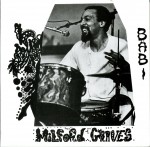 Probably the most historically relevant set to become available for the first time on CD is Bäbi (Corbett vs. Dempsey CvsDCD052; corbettvsdempsey.com) by master-drummer Milford Graves. Recently the subject of Full Mantis (a documentary about Graves’ contribution to sessions by the likes of Albert Ayler and Paul Bley and his years teaching at Bennington College), Graves is acknowledged as one of the originators of multi-pulsed, free-form drumming. This legendary 1976 disc, with the sophisticated drum patterns evolving alongside frenetic screeching and jumping multiphonics from saxophonists Arthur Doyle and Hugh Glover, captures that trio at its zenith, and the 2CD set includes an additional four tracks recorded in 1969 by the same band. If anything 1969 Trio 1 to 1969 Trio 4 are even further out than the sounds Graves, Doyle and Glover would record seven years later. With sabre-sharp altissimo cries, and fractured split tones plus near bloodcurdling vocal interruptions, the performance is the epitome of 1960s ecstatic jazz. Yet beneath the reed gurgling and glossolalia, Graves’ press rolls, cymbal-splashing and elastic textures create a thundering counterpoint and moderating influence on the saxophone astringency. The drummer may be kicking off and time-marking his performance with more speaking in tongues and whooping in 1976, but he’s refined his percussion strategy still further. Pounding ruffs and rebounds at a whirlwind pace, his patterning pushes reed peeps and fissures to a higher plane, and then brings them back to earth. Meanwhile on the concluding Bäbi, his verbal counting-off and vocal time and tempo shifts for the others resemble Africanized tribal chants. With Glover and Doyle becoming more exaggerated in their screeching and slathering irregular vibrations, Graves empties his percussion trick bag, fluidly jerking from steel-drum-like rhythms to bell-ringing, wood and Mylar block thumps and skin slaps. The horns may be heading for outer space, but the drummer’s pacing ensures that the pieces judder with foot-tapping rhythms as well.
Probably the most historically relevant set to become available for the first time on CD is Bäbi (Corbett vs. Dempsey CvsDCD052; corbettvsdempsey.com) by master-drummer Milford Graves. Recently the subject of Full Mantis (a documentary about Graves’ contribution to sessions by the likes of Albert Ayler and Paul Bley and his years teaching at Bennington College), Graves is acknowledged as one of the originators of multi-pulsed, free-form drumming. This legendary 1976 disc, with the sophisticated drum patterns evolving alongside frenetic screeching and jumping multiphonics from saxophonists Arthur Doyle and Hugh Glover, captures that trio at its zenith, and the 2CD set includes an additional four tracks recorded in 1969 by the same band. If anything 1969 Trio 1 to 1969 Trio 4 are even further out than the sounds Graves, Doyle and Glover would record seven years later. With sabre-sharp altissimo cries, and fractured split tones plus near bloodcurdling vocal interruptions, the performance is the epitome of 1960s ecstatic jazz. Yet beneath the reed gurgling and glossolalia, Graves’ press rolls, cymbal-splashing and elastic textures create a thundering counterpoint and moderating influence on the saxophone astringency. The drummer may be kicking off and time-marking his performance with more speaking in tongues and whooping in 1976, but he’s refined his percussion strategy still further. Pounding ruffs and rebounds at a whirlwind pace, his patterning pushes reed peeps and fissures to a higher plane, and then brings them back to earth. Meanwhile on the concluding Bäbi, his verbal counting-off and vocal time and tempo shifts for the others resemble Africanized tribal chants. With Glover and Doyle becoming more exaggerated in their screeching and slathering irregular vibrations, Graves empties his percussion trick bag, fluidly jerking from steel-drum-like rhythms to bell-ringing, wood and Mylar block thumps and skin slaps. The horns may be heading for outer space, but the drummer’s pacing ensures that the pieces judder with foot-tapping rhythms as well.
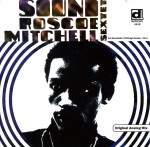 If Bäbi has been more legendary than listened to over the past 45 years, then saxophonist Roscoe Mitchell’s defining work from 1966, Sound (Delmark DE 4408; delmark.com), has an opposite history. Constantly available since its release, this new reissue uses the original analog mix and includes alternate, longer takes of the title track and Ornette. A breakthrough which put the burgeoning Association for the Advancement of Creative Musicians’ (AACM) sound on disc for the first time, two of the members of the sextet – trumpeter Lester Bowie and bassist Malachi Favors – soon joined Mitchell and others to form the influential Art Ensemble of Chicago. At that time Ornette confirmed that Ornette Coleman’s early 1960s advances were now accepted additions to contemporary jazzers’ vocabulary, though granted the mix of duck-like quacks and piercing kazoo-like peeps from Mitchell and tenor saxophonist Maurice McIntyre on both takes probably draws more from the AACM’s sardonic viewpoint than Coleman’s more naïve concepts. Plus reed trills are artfully balanced by sophisticated guitar-like patterning from Favors and cellist Lester Lashley. Even cursory listening to the alternate takes reveals subtle differences between them with different emphases and climaxes. With its harmonica breaths and cogwheel ratchet cracks, The Little Suite is even more indicative of how Mitchell compositions could be moderato and spiky simultaneously, as advanced Coleman-John Coltrane-like reed-tone explorations share space with vocal yelps in a tambourine-smacking pseudo march. With over 20 minutes to elaborate his sonic concepts on either take of Sound, Mitchell creates a mercurial sound kaleidoscope. His sometimes snarling, sometimes circular-breathed alto saxophone line negotiates a distinctive exposition that ambles past near-breathless trombone signs, spectacular trumpet accelerations, driving cymbal rattles and tough sul ponticello string nips. No matter how abstract the exposition however, the composition advances harmonically with the initially available track even concluding with a recapped head. Sound maintains its reputation since it synthesizes the music that preceded it and adumbrates sounds to come.
If Bäbi has been more legendary than listened to over the past 45 years, then saxophonist Roscoe Mitchell’s defining work from 1966, Sound (Delmark DE 4408; delmark.com), has an opposite history. Constantly available since its release, this new reissue uses the original analog mix and includes alternate, longer takes of the title track and Ornette. A breakthrough which put the burgeoning Association for the Advancement of Creative Musicians’ (AACM) sound on disc for the first time, two of the members of the sextet – trumpeter Lester Bowie and bassist Malachi Favors – soon joined Mitchell and others to form the influential Art Ensemble of Chicago. At that time Ornette confirmed that Ornette Coleman’s early 1960s advances were now accepted additions to contemporary jazzers’ vocabulary, though granted the mix of duck-like quacks and piercing kazoo-like peeps from Mitchell and tenor saxophonist Maurice McIntyre on both takes probably draws more from the AACM’s sardonic viewpoint than Coleman’s more naïve concepts. Plus reed trills are artfully balanced by sophisticated guitar-like patterning from Favors and cellist Lester Lashley. Even cursory listening to the alternate takes reveals subtle differences between them with different emphases and climaxes. With its harmonica breaths and cogwheel ratchet cracks, The Little Suite is even more indicative of how Mitchell compositions could be moderato and spiky simultaneously, as advanced Coleman-John Coltrane-like reed-tone explorations share space with vocal yelps in a tambourine-smacking pseudo march. With over 20 minutes to elaborate his sonic concepts on either take of Sound, Mitchell creates a mercurial sound kaleidoscope. His sometimes snarling, sometimes circular-breathed alto saxophone line negotiates a distinctive exposition that ambles past near-breathless trombone signs, spectacular trumpet accelerations, driving cymbal rattles and tough sul ponticello string nips. No matter how abstract the exposition however, the composition advances harmonically with the initially available track even concluding with a recapped head. Sound maintains its reputation since it synthesizes the music that preceded it and adumbrates sounds to come.
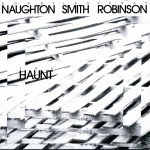 Experiments in free-form sounds were spreading outwards from New York and Chicago all during that time, and 1976’s The Haunt (NoBusiness Records NBCD 105; nobusinessrecords.com) documents the now almost-forgotten New Haven scene. Ironically, although Connecticut-based clarinetist Perry Robinson was from New York, and trumpeter Wadada Leo Smith, an AACM linchpin, a Chicago expat, local vibraharpist Bobby Naughton was the third trio member and composed all the tunes. Stripped to chamber improv, the six tracks don’t suffer from lack of conventional chordal or percussion timbres, since Naughton’s just-in-time steel bar resonations purposely and craftily fill any gaps left from the sonic contrasts among Smith’s heraldic open-horn keens and Robinson’s abstruse glissandi or whinnies. While gorgeous trumpet storytelling on tracks such as Places moves with contrapuntal injections from shrill clarinet pitches, from polychromatic expanse to uncomfortable abstraction, mallet-chiming pops prevent this. Instead, shimmering vibes tones help assume a forward-moving group pulse. Skillful in adding diaphanous, but not delicate, mallet strokes that ring like toy piano keys; or adding extra weightiness by striking while diminishing the motor speed, the vibist’s skill and The Haunt’s individuality are highlighted on the concluding Ordette. With calm mallet-on-metal strokes preserving the narrative, textures resulting from blending Robinson’s note spews and Smith’s graceful slurs are now harmonized, moderated but no less powerful on this disc recorded a decade after Sound.
Experiments in free-form sounds were spreading outwards from New York and Chicago all during that time, and 1976’s The Haunt (NoBusiness Records NBCD 105; nobusinessrecords.com) documents the now almost-forgotten New Haven scene. Ironically, although Connecticut-based clarinetist Perry Robinson was from New York, and trumpeter Wadada Leo Smith, an AACM linchpin, a Chicago expat, local vibraharpist Bobby Naughton was the third trio member and composed all the tunes. Stripped to chamber improv, the six tracks don’t suffer from lack of conventional chordal or percussion timbres, since Naughton’s just-in-time steel bar resonations purposely and craftily fill any gaps left from the sonic contrasts among Smith’s heraldic open-horn keens and Robinson’s abstruse glissandi or whinnies. While gorgeous trumpet storytelling on tracks such as Places moves with contrapuntal injections from shrill clarinet pitches, from polychromatic expanse to uncomfortable abstraction, mallet-chiming pops prevent this. Instead, shimmering vibes tones help assume a forward-moving group pulse. Skillful in adding diaphanous, but not delicate, mallet strokes that ring like toy piano keys; or adding extra weightiness by striking while diminishing the motor speed, the vibist’s skill and The Haunt’s individuality are highlighted on the concluding Ordette. With calm mallet-on-metal strokes preserving the narrative, textures resulting from blending Robinson’s note spews and Smith’s graceful slurs are now harmonized, moderated but no less powerful on this disc recorded a decade after Sound.
 Midway between when Sound and The Haunt were recorded is the 1970 instance of truth-in-packaging Groupcomposing (Corbett vs. Dempsey CvsDCD056; corbettvsdempsey.com), which shows off the free-music conceptions European players had been developing on their own during the previous half-decade, only peripherally influenced by stateside experiments. Trans-European long before the 1993 Maastricht Treaty created the European Union, the Instant Composers Pool here includes three players from the United Kingdom, three from The Netherlands and a German. A couple of years after such defining LPs as Machine Gun and European Echoes were recorded (featuring most of these players), sound-searing saxophonists Peter Brötzmann and Peter Bennink, slippery-toned trombonist Paul Rutherford plus unpredictable drummer Han Bennink were still producing oppressive timbres that bounce from polyphony to cacophony to multiphonics. Meanwhile guitarist Derek Bailey’s distinctive, spiky twangs occasionally peer from the near-solid sound mass and saxophonist Evan Parker, two months away from recording the BritImprov-defining Topography of the Lungs (with Bailey and [Han] Bennink), tries out both the agitated and allayed approaches in his solos. One defining moment occurs midway through Groupcomposing2 when the guitarist’s astringent clanks join Parker’s split tones and pinched snores from the trombone for a caustic lull that is soon swallowed by long tones from the saxophones, plus belligerent cracks and blunt ruffs from Bennink’s hand bells, cymbals and odd percussion add-ons. Other eventful sequences among the claustrophobic mass of upwards spiralling broken-reed glissandi and trombone gutbucket smears, are sardonic intermezzos from pianist Misha Mengelberg, who defies the others by clanking keys at divergent speeds and pitches. Like Sound, Groupcomposing is suggesting alternate improvisational paths for the future.
Midway between when Sound and The Haunt were recorded is the 1970 instance of truth-in-packaging Groupcomposing (Corbett vs. Dempsey CvsDCD056; corbettvsdempsey.com), which shows off the free-music conceptions European players had been developing on their own during the previous half-decade, only peripherally influenced by stateside experiments. Trans-European long before the 1993 Maastricht Treaty created the European Union, the Instant Composers Pool here includes three players from the United Kingdom, three from The Netherlands and a German. A couple of years after such defining LPs as Machine Gun and European Echoes were recorded (featuring most of these players), sound-searing saxophonists Peter Brötzmann and Peter Bennink, slippery-toned trombonist Paul Rutherford plus unpredictable drummer Han Bennink were still producing oppressive timbres that bounce from polyphony to cacophony to multiphonics. Meanwhile guitarist Derek Bailey’s distinctive, spiky twangs occasionally peer from the near-solid sound mass and saxophonist Evan Parker, two months away from recording the BritImprov-defining Topography of the Lungs (with Bailey and [Han] Bennink), tries out both the agitated and allayed approaches in his solos. One defining moment occurs midway through Groupcomposing2 when the guitarist’s astringent clanks join Parker’s split tones and pinched snores from the trombone for a caustic lull that is soon swallowed by long tones from the saxophones, plus belligerent cracks and blunt ruffs from Bennink’s hand bells, cymbals and odd percussion add-ons. Other eventful sequences among the claustrophobic mass of upwards spiralling broken-reed glissandi and trombone gutbucket smears, are sardonic intermezzos from pianist Misha Mengelberg, who defies the others by clanking keys at divergent speeds and pitches. Like Sound, Groupcomposing is suggesting alternate improvisational paths for the future.
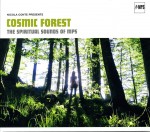 The most inclusive sonic snapshot of the 1960s and 1970s is, however, Cosmic Forest – The Spiritual Sounds of MPS (MPS 4029759122562; mps-music.com) which collects 13 tracks by American and European musicians trying out conflicting musical strands to unite with jazz. A few which foretold the intellectual dead end of vocal-led smooth jazz are best forgotten, but others such as saxophonist Nathan Davis’ Evolution, find a committed bopper adopting modal currents to his own style; still others inaugurating a version of expansive Nordic narratives; while Timbales Calientes from the MPS Rhythm Combination & Brass is a reimaging of Latin-jazz rock with the layered section work goosed by Palle Mikkelborg’s stratospheric trumpet lines. More compelling are players pioneering a fusion between improvised and so-called world music. For instance clarinetist Tony Scott’s Burungkaka Tua is a notable melding of Scott’s moderated tone, tough ethnic blowing from Javanese flutist Marjono and a decisive blues underpinning from Chinese pianist Bubi Chen. Pianist George Gruntz’s Djerbi takes a traditional Bedouin dance melody played by Sadi El Nadi on ney and unites it with the pianist’s chromatic thrusts aided by Daniel Humair’s foot-tapping drumming. A crucial harbinger of what was to come is Yaad, which, propelled by tabla slaps, unites the exploratory comping of pianist Irène Schweizer and Barney Wilen’s whispery flute with the sitar twangs and vocalized chants of Dewan Motihar mirrored by trumpet blats from Manfred Schoof.
The most inclusive sonic snapshot of the 1960s and 1970s is, however, Cosmic Forest – The Spiritual Sounds of MPS (MPS 4029759122562; mps-music.com) which collects 13 tracks by American and European musicians trying out conflicting musical strands to unite with jazz. A few which foretold the intellectual dead end of vocal-led smooth jazz are best forgotten, but others such as saxophonist Nathan Davis’ Evolution, find a committed bopper adopting modal currents to his own style; still others inaugurating a version of expansive Nordic narratives; while Timbales Calientes from the MPS Rhythm Combination & Brass is a reimaging of Latin-jazz rock with the layered section work goosed by Palle Mikkelborg’s stratospheric trumpet lines. More compelling are players pioneering a fusion between improvised and so-called world music. For instance clarinetist Tony Scott’s Burungkaka Tua is a notable melding of Scott’s moderated tone, tough ethnic blowing from Javanese flutist Marjono and a decisive blues underpinning from Chinese pianist Bubi Chen. Pianist George Gruntz’s Djerbi takes a traditional Bedouin dance melody played by Sadi El Nadi on ney and unites it with the pianist’s chromatic thrusts aided by Daniel Humair’s foot-tapping drumming. A crucial harbinger of what was to come is Yaad, which, propelled by tabla slaps, unites the exploratory comping of pianist Irène Schweizer and Barney Wilen’s whispery flute with the sitar twangs and vocalized chants of Dewan Motihar mirrored by trumpet blats from Manfred Schoof.
Free music orchestrator Schoof’s presence confirms that improvisers of the time were committed to experimenting with all sorts of sounds. Many exceptional projects were recorded in the 1960s and 70s, and the more that become available again, the more they increase our knowledge of what was attempted and accomplished.
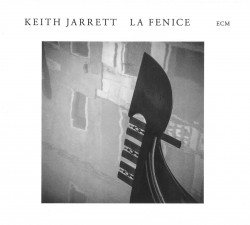 La Fenice
La Fenice







